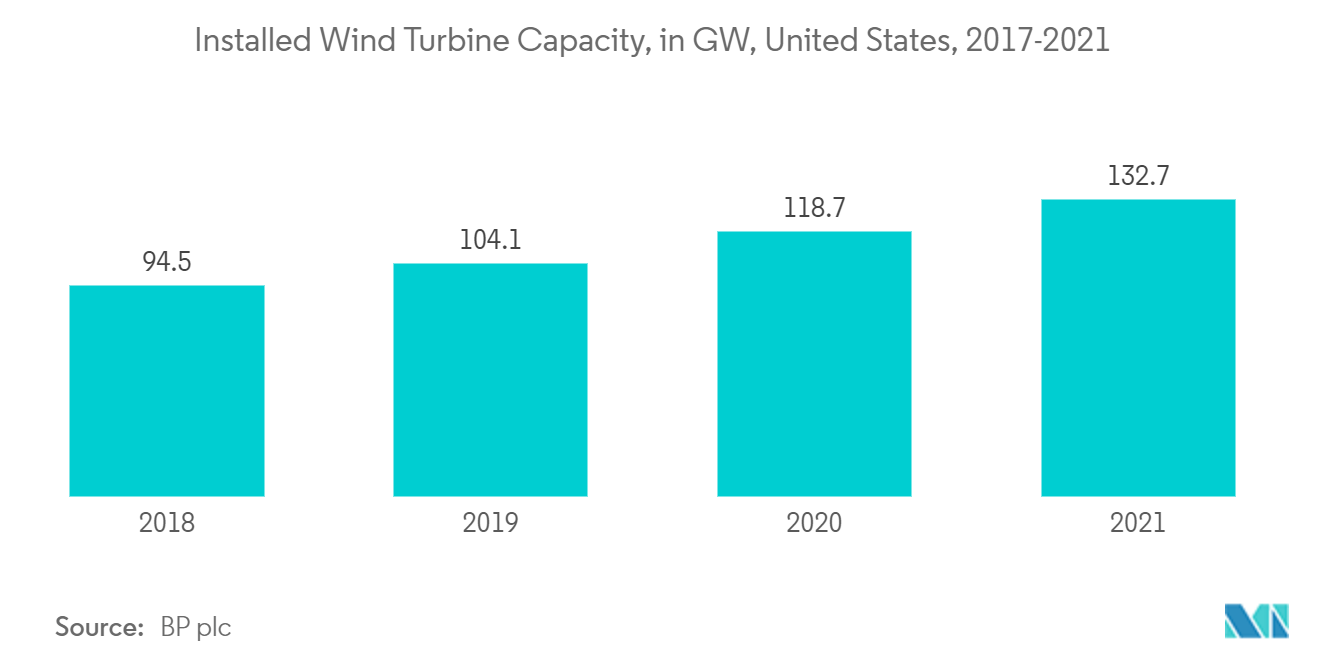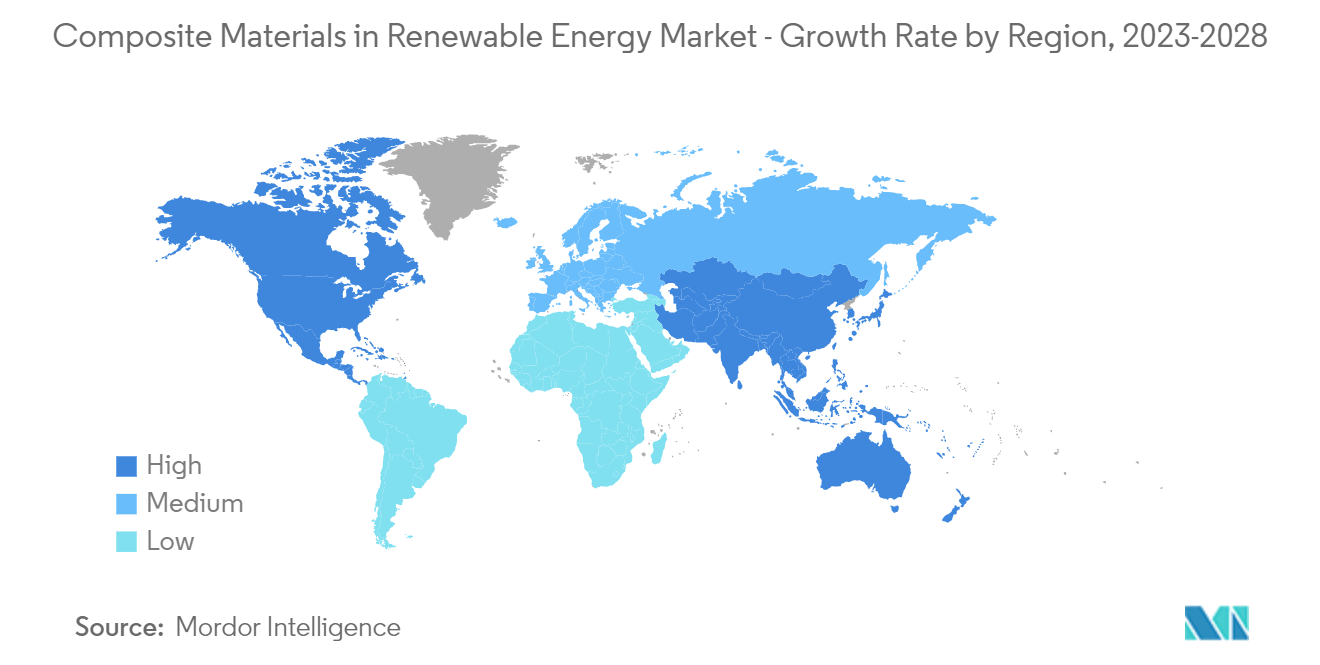Market Trends of Composite Materials in Renewable Energy Industry
This section covers the major market trends shaping the Composite Materials in Renewable Energy Market according to our research experts:
Wind Power Application to Dominate the Market
- The wind is the fastest-growing energy source globally. The prime factor for this increase is that the wind energy cost dropped and continues to drop dramatically, making it more competitive each year.
- The technology for manufacturing wind turbine blades significantly progressed over the past years. Using composites in turbine blade manufacturing, highly influences the decrease in cost.
- As the wind energy market grows globally and blade sizes continue to increase, wind farm developers will need more composite materials to help meet these demands.
- Many R&D efforts also focus on making wind blades more recyclable. In September 2021, Siemens Gamesa launched RecyclableBlade, the world's first recyclable wind turbine blade for commercial use offshore.
- The US President planned to deploy 30 GW of offshore wind energy in offshore wind by 2030. In May 2021, the Biden administration also approved the first major offshore wind project in US waters, the 800-MW Vineyard Wind energy project off the coast of Massachusetts.
- In 2021, CorPower Ocean built the first full-scale prototype of its filament-wound glass fiber-reinforced composite (GFRP) buoy-shaped wave energy converters, which the company aims to scale up into industrial-scale ocean energy farms by 2025.
- Due to the above reasons, wind power applications will likely dominate the market studied over the forecast period.

North America to Dominate the Market
- North America dominates the composite materials in renewable energy, with most of the demand coming from the United States.
- Wind power is the largest renewable energy source in the United States (excluding hydroelectricity), accounting for around 2.5% of energy consumption.
- Furthermore, the rising demand for long turbine blades will boost composite material consumption. In the next three to five years, 300-foot-long composite blades on 8 to 10 MW turbines are expected in the offshore wind energy sector.
- The US Department of Energy set an objective that by 2030, 20% of US electricity will be produced from wind energy. In 2021, the United States wind industry installed 13,413 MW of new wind capacity, bringing the cumulative total to 135,886 MW.
- Additionally, in September 2021, Vestas Wind Systems AS announced orders to deliver turbines for 290 MW of wind projects in the United States. Part of this project is supplying 16 units of the V162-6.2 MW turbines in a 6.0 MW operating mode and one V150-6.0 MW machine in a 5.6 MW operating mode for the Deerfield 2 wind farm in Michigan.
- Additionally, to boost the growth of this industry, the United States extended the federal Production Tax Credit (PTC) by five years, thereby creating exceptional market stability.
- These factors above are augmenting the composites' usage in the country, owing to which the North American region is likely to dominate the market studied during the forecast period.

